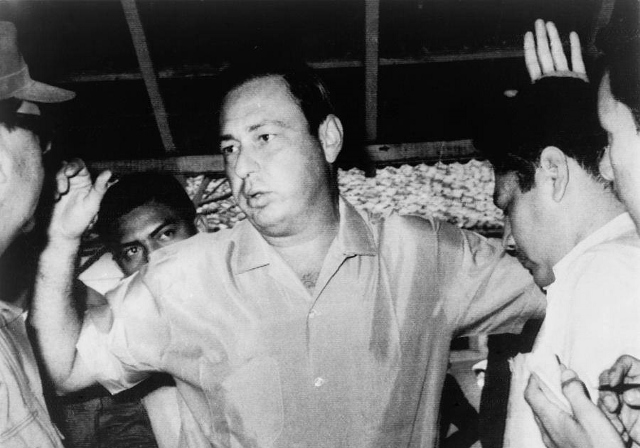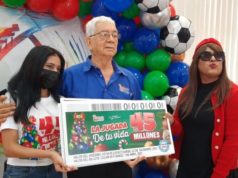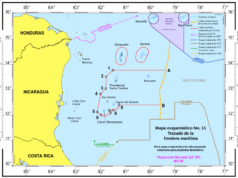Pedro Joaquín Chamorro (September 23, 1924 – January 10, 1978) was a Journalist and Editor of La Prensa, which at the time of his death in 1978 was the only independent national news source, other than that circulated by the Somoza family.
(From an article originally published in Del Sur News on January 10th 2012)
Born in Granada, his history as an opponent of what was called the “Somoza Dynasty” began as a 20 year old law school student, taking part in demonstrations against General Anastasio Somoza García. A speech at an anti-Somoza rally in 1944 resulted in his first arrest and subsequent detention.
In that same year, La Prensa (his family’s newspaper) was closed down by Somoza and they all fled to Mexico. In Mexico, Chamorro switched his studies to journalism and when he returned to Nicaragua in 1948, he became the Editor of the new La Prensa. Chamorro continued to be a thorn in the side of Somoza government and was often jailed for his newspapers content.
However, he never stopped the fight to rid Nicaragua of the Somoza dictatorship. This led to more arrests, such as in 1954 when he was jailed on charges of “rebellion”. His prison sentence was later reduced to house arrest in 1955.
In the following year, this freedom was taken away from him after the rebellion which followed Somoza’s assassination on the 29th of September 1956. Chamorro was accused of being involved in the assassination, a charge that was later reduced to another one of “rebellion”. He was “banished” to northern Nicaragua but managed to escape to Costa Rica with his wife, Violeta Barrios de Chamorro.
While there, Chamorro continued his fight against the Somoza government. This time he planned to overthrow the government of Luis Somoza Debayle (the son of Anastasio) and new leader of the “Dynasty”. The group was captured and Chamorro was sentenced to nine years in prison for treason.
After his release, Chamorro once again became editor of La Prensa and Nicaragua had a new President, Anastasio Somoza Debayle (the younger son of Anastasio Somoza García).
Chamorro became the head of the UDEL opposition party; “Democratic Union of Liberation”.
Rather than shut the paper down, this Somoza began censoring Chamorro and La Prensa. He introduced a daily, afternoon approval process of the next day’s copy of La Prensa, followed by a check of the front and last page (wrap) on the day of publication. The censorship was performed by officers from the National Guard.
Assassination
As if predicting Somoza’s plan for his demise, Chamorro wrote a letter to him in 1975 in which he said;
“I am waiting, with a clear conscience, and a soul at peace, for the blow you are to deliver.”
Three years later, on January the 10th 1978, Chamorro was killed by unknown gunmen who opened fire with machine guns when he was in his car. Somoza blamed Pedro Ramos, a Cuban-American businessman who had been the subject of a negative La Prensa story. However, in the court of public opinion, the verdict was that Somoza had ordered him killed.
The murder of this “unyielding character”, Pedro Joaquín Chamorro Cardenal turned up the heat of the antigovernmental movement and rallied the people.
Violeta Barrios de Chamorro
Chamorro’s widow, Violeta Barrios de Chamorro took over La Prensa and later became part of the post-revolution ‘Junta’ from 1979 to 1980. The Junta was the provisional government of Nicaragua from July 1979 until January 1985.
As leader of the National Opposition Union party (in Spanish: Unión Nacional Opositora – UNO) Violeta Barrios de Chamorro later became President of Nicaragua from 1990 to 1996.
During a speech at the 1998 IPI World Press Congress in Moscow, Violeta said:
“During his whole life, Pedro Joaquín Chamorro was a tireless fighter for democracy in Nicaragua and against the dictatorship of Somoza. This cost him incarceration, torture, exile and finally death. He was warned many times that plans existed to assassinate him, yet no threat deterred him from fulfilling his mission to impart the truth and preach democracy.”







